Volvo Cars
 Volvo Cars logo | |
| Subsidiary, AB | |
| Industry | Automotive |
| Founded | 14 April 1927 |
| Headquarters | Gothenburg, Sweden |
Key people |
Li Shufu (Chairman) Håkan Samuelsson (President and CEO), Hans-Olov Olsson (Vice-Chairman) |
| Products | Vehicles |
| Revenue | SEK 164.043 billion (2015) |
| SEK 6.620 billion (2015) | |
| SEK 4.476 billion (2015) | |
| Owner | Geely Sweden AB |
Number of employees | 28,485 (2015) |
| Parent | Zhejiang Geely Holding Group |
| Divisions | Polestar |
| Subsidiaries |
Volvo Cars Asia Pacific Volvo Cars of Canada Volvo Cars of North America |
| Website |
VolvoCars.com Volvo Cars International Website |
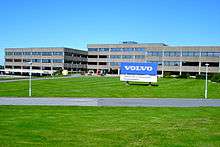
Volvo Car Corporation (Swedish: Volvo personvagnar) (stylized as VOLVO) is a Swedish automobile manufacturer established in 1927 and headquartered in Gothenburg, Sweden, where it operates out of the VAK building.[1] It is a wholly owned subsidiary of Zhejiang Geely Holding Group of China.
Volvo Car Corporation was originally founded as a subsidiary of the ball bearing maker SKF.[2] When Volvo AB was introduced on the Swedish stock exchange in 1935, SKF sold most of the shares in the company. Volvo Cars was owned by AB Volvo until 1999, when it was acquired by the Ford Motor Company as part of its Premier Automotive Group. Geely Holding Group then acquired Volvo Cars from Ford in 2010.[3]
Volvo Cars manufactures and markets sport utility vehicles, station wagons, sedans, compact executive sedans, and coupes. With approximately 2,300 local dealers from around 100 national sales companies worldwide, Volvo Cars' largest markets are the United States, Sweden, China and Belgium.[4] In 2011, Volvo Cars sold 449,255 cars globally, an increase of 20.3% compared to 2010.[5]
History
1927–99
Volvo company was founded in 1927, in Gothenburg, Sweden, The company was created as a subsidiary company 100% owned by SKF. Assar Gabrielsson was appointed the managing director and Gustav Larson as the technical manager.
Cars are driven by people. The guiding principle behind everything we make at Volvo, therefore, is and must remain, safety
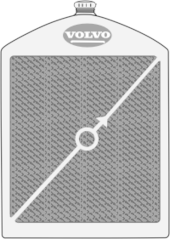
The trademark Volvo (which is Latin for I roll) was first registered by SKF the 11 May 1915 with the intention to use it for a special series of ball bearing for the American market but it was never used for this purpose (however in the application for the trademark, it was also designated for the purpose of automobiles). SKF trademark as it looks today was used instead for all the SKF-products. Some pre-series of Volvo-bearings stamped with the brand name 'Volvo' were manufactured but was never released to the market and it was not until 1927 that the trademark was used again, now as a trademark and company name for an automobile.
The first Volvo car left the assembly line on 14 April 1927, and was called Volvo ÖV 4. After this the young company produced closed top and cabriolet vehicles, which were designed to hold strong in the Swedish climate and terrain. In the registration application for Volvo logotype in 1927, they simply made a copy of the entire radiator for ÖV4, viewed from the front.
Presented in 1944, the Volvo PV444 passenger car only entered production in 1947. It was the smallest Volvo yet and was to take the lion's share of Volvo production, as well as spearheading their move into the profitable American market. The first Volvos arrived in the United States in 1955, after hardware wholesaler Leo Hirsh began distributing cars in California. Later, Texas was added, and in 1956, Volvo themselves began importing cars to the US. North America has consistently provided Volvo with their main outlet since.[8]
In 1963, Volvo opened the Volvo Halifax Assembly plant, the first assembly plant in the company's history outside of Sweden, in Halifax, Nova Scotia, Canada.[9] In 1964, Volvo opened its Torslanda plant in Sweden, which currently is one of its largest production sites (chiefly large cars and SUVs).[10] Then in 1965, the Ghent, Belgium plant was opened, which is the company's second largest production site.[11] This was also Volvo's first location producing cars within the European Economic Community.[9] In 1989, the Uddevalla plant in Sweden was opened, which was jointly operated by Volvo Car Corporation and Pininfarina Sverige AB from 2005 to 2013.[12]
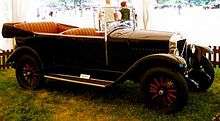
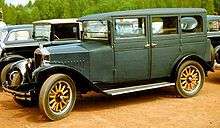
_01.jpg)
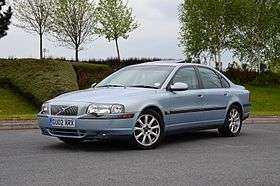
Volvo's long-time CEO Pehr G. Gyllenhammar saw early on that Volvo was too small to survive in the future, and attempted several times to merge with other manufacturers. Volvo nearly merged with Saab in the late seventies, while in 1978 an aborted affair would have seen the Norwegian state take over 40 percent of the company. In return, Volvo would receive 200 million SEK and a ten percent concession in the Oseberg oil field. Major institutional actors in Sweden opposed the deal and blocked it.[13] A deal to merge with Renault was blocked in 1993, mainly opposed by a Swedish stockholders' association.[14]
A collection of Volvo's most important historical vehicles are now housed in the Volvo Museum, which opened in a permanent location in Arendal at Hisingen on 30 May 1995.[15] For several years, the collection had been housed at the Blue Hangar, at the then closed Torslanda Airport.[15]
In the early 1970s, Volvo acquired the passenger car division of the Dutch company DAF, and marketed their small cars as Volvos before releasing the Dutch-built Volvo 340, which went on to be one of the biggest-selling cars in the UK market in the 1980s. 1986 marked a record year for Volvo in the US, with 113,267 cars sold. The appearance of Japanese luxury brands like Acura and Lexus in subsequent years meant the loss of a significant market share for Volvo, one which they have never regained.[8]
In 1999, Volvo Group decided to sell its automobile manufacturing business and concentrate on commercial vehicles. Ford saw advantages in acquiring a profitable prestige mid-size European automobile manufacturer, well renowned for its safety aspects, as an addition to its Premier Automotive Group. The buyout of Volvo Cars was announced on 28 January 1999,[16] and in the following year the acquisition was completed at a price of US$6.45 billion. As a result of the divestiture, the Volvo trademark is now utilized by two separate companies:
- Volvo Group – a manufacturer of commercial vehicles, etc. owned by Swedish interests
- Volvo Car Corporation or Volvo Cars – a manufacturer of automobiles owned by Zhejiang Geely Holding Group and formerly owned by Ford Motor Company
Ford era
Volvo Car Corporation was part of Ford Motor Company's Premier Automotive Group (PAG), along with Jaguar, Aston Martin and Land Rover. While part of the PAG, the company grew in its range of vehicles significantly.
After Ford sold Jaguar Land Rover to Tata Motors of India in 2008, the company initially decided to keep Volvo Cars despite mounting losses and gross economic downturns. Ford decided to restructure plans for Volvo Cars, pushing it further upmarket alongside the lower end of Mercedes and BMW sedans, wagons, and SUV crossovers. The outcome was the luxurious second generation Volvo S80 and the new small premium crossover Volvo XC60.
When the global economic crisis of 2008 threatened the US automakers, Swedish authorities became concerned about the fate of Volvo if Ford would file for bankruptcy. These concerns mounted after repeated mass-layoffs at Volvo. Ford announced in December 2008 that it was considering selling Volvo Cars. Initially, a sale price of US$6 billion was reported,[17] Ford reported it was also looking into the possibility of spinning off Volvo as an independent company. The Swedish government was asked to look into a possible state ownership of Volvo, or a financial bailout for Volvo Cars and SAAB of GM. Former parent AB Volvo agreed to help Volvo cut costs through partnerships, and suggested taking part in a shared ownership of Volvo Cars amongst a larger consortium. Other rumored candidates to purchase Volvo Cars included BMW AG of Germany, Investor AB of Sweden, Chinese investors, or Russian investors.
Although it was rumoured that Volkswagen would buy Volvo Cars, and despite initial denials, Chinese company Geely Holding Group was ultimately selected to take over the Swedish automaker.[18] Geely Group Holdings Co. allegedly bid about US$1.5 billion to take over Volvo, with Goldman Sachs investing HK$2.59 billion (334 million USD) in the holding company.[19][20][21]
Geely era
Ford Motor Company offered Volvo Cars for sale in December 2008, after suffering losses that year.[22] On 28 October 2009, Ford confirmed that, after considering several offers, the preferred buyer of Volvo Cars was Zhejiang Geely Holding Group, the parent of Chinese motor manufacturer Geely Automobile.[23][24] On 23 December 2009, Ford confirmed the terms of the sale to Geely had been settled. A definitive agreement was signed on 28 March 2010, for $1.8 billion. The European Commission and China's Ministry of Commerce approved the deal on 6 and 29 July 2010, respectively. The deal closed on 2 August 2010 with Geely paying $1.3 billion cash and a $200 million note. Further payments are expected with a later price "true-up".[25][26] It is the largest overseas acquisition by a Chinese automaker.[27]
Stefan Jacoby, formerly chief executive of Volkswagen of America, became Volvo Car Corporation's president and chief executive on 16 August 2010, replacing Stephen Odell, who became chief executive of Ford Europe. Li Shufu became Volvo Cars' chairman of the board. His board members include vice-chairman Hans-Olov Olsson, a former president and chief executive of Volvo Cars, and Håkan Samuelsson, formerly chief executive of MAN.[28]
Safety
Volvo cars have long been marketed and stressed their historic reputation for solidity and reliability. Prior to strong government safety regulation Volvo had been at the forefront of safety engineering.[29]
In 1944, laminated glass was introduced in the PV model.[30] After Vattenfall engineers presented their pioneering work to Volvo in the 1950s,[31] Volvo engineer Nils Bohlin invented and patented the modern three-point safety belt, which became standard on all Volvo cars in 1959,[32] and then made this design patent open in the interest of safety and made it available to other car manufacturers for free.[33][34] Additionally, Volvo developed the first rear-facing child seat in 1964[30] and introduced its own booster seat in 1978.[30]
In 1991, the 960 introduced the first three-point seat belt for the middle of the rear seat and a child safety cushion integrated in the middle armrest.[30] Also in 1991, it introduced the Side Impact Protection System (SIPS) on the 700, 940/960 and 850 models, which channels the force of a side impact away from the doors and into the safety cage.[35]
In 1994,[36] to add to its SIPS, Volvo was the first to introduce side airbags and installed them as standard equipment in all models from 1995. At the start of the 1995 model year, side impact protection airbags were standard on high trim-level Volvo 850s, and optional on other 850s. By the middle of the production year, they were standard on all 850s. In model year 1995, SIPS airbags became standard on all Volvo models.[36]
In 1995, the Volvo 745 was recalled as the front seatbelt mounts could break in a collision.[37][38]
In 1998, Volvo installed a head-protecting airbag,[39] which was made standard in all new models as well as some existing models.[36] The IC head-protecting airbag was not available on the 1997 C70 since the initial design deployed the airbag from the roof, and the C70, being a convertible, could not accommodate such an airbag. A later version of the C70 featured a head-protecting airbag deploying upwards from the door, avoiding this problem. It has been stated by many testing authorities that side head protecting curtain airbags can reduce the risk of death in a side impact by up to 40% and brain injury by up to 55%, as well as protecting during a rollover.[40] In 1998, Volvo introduced its Whiplash Protection System (WHIPS), a safety device to prevent injury to front seat users during collisions.[30]
In 2004, Volvo introduced the Blind Spot Information System (BLIS), which detects vehicles entering the vehicle's blind spot with a side-view-mirror-mounted camera, and alerts the driver with a light. That year also saw Volvos sold in all markets equipped with side-marker lights and daytime running lights. Also, since 2004 all Volvo models except for the coupes (C70 and C30) are available with an all-wheel drive system developed by Haldex Traction of Sweden.[41]
In 2005, Volvo presented the second generation of Volvo C70, which came with extra stiff door-mounted inflatable side curtains (the first of its kind in a convertible) dubbed 'DMIC'.[42][43][44]
Even though Volvo Car Corporation was owned by Ford Motor Company, Volvo's safety systems were still standard on all Volvo vehicles. Volvo has patented all its safety innovations, including SIPS, WHIPS, ROPS, DSTC, and body structures. Some of these systems were fitted to other Ford vehicles in forms similar to those of Volvo systems, but only because Volvo licensed the FOMOCO and other PAG members to utilize these features.
A 2005 Folksam report,[45] put the 740/940 (from 1982 on) in the 15% better than average category, the second from the top category.
In 2005, when the American non-profit, non-governmental Insurance Institute for Highway Safety (IIHS) released its first annual "Top Safety Picks" vehicles list, none of Volvo's offered vehicles in the US were included on the list.[46] According to Russ Rader, a spokesman for IIHS, Volvo lagged behind its competitors.[47] Dan Johnston, a Volvo spokesman, denied that the company's vehicles were any less safe than the institute's top-rated vehicles, adding that
It's just a philosophy on safety that is different from building cars to pass these kinds of tests.[47]
In 2006, Volvo's Personal Car Communicator (PCC) remote control was launched as an optional feature with the all-new Volvo S80. Before a driver enters their car, they can review the security level and know whether they had set the alarm and if the car is locked.[48][49] Additionally, a heartbeat sensor warns if someone is hiding inside the car.[48] The S80 was also the first Volvo model to feature adaptive cruise control (ACC) with Collision Warning and Brake Support (CWBS).[50]
In 2008, a French court found Volvo partially responsible for causing the death of two children and serious injuries of another in Wasselonne on 17 June 1999, when the brakes of a 1996 Volvo 850 failed. The court subjected Volvo to a €200,000 fine.[29][51][52][53]
According to the Insurance Institute for Highway Safety (IIHS), Volvo's S80 became one of the 2009 Top Safety Picks Award winners. The previous versions of the S40 and S60 models (2005–09 models with standard side airbags) failed to attain the highest rating in their side impact test.[54][55] However, according to the IIHS, in recent years Volvo cars have still managed to maintain their high class safety ratings as seen in test results.[56] The Volvo XC90, S80, C70, XC60, S60 and C30 are all rated Top Safety Picks in these crash tests.[57][58][59][60][61][62] The 2014 models of the XC60, XC90, S60 and S80 have even received the Top Safety Pick+ rating.[63][64]
Volvo has also scored high in EuroNCAP tests. Since 2009, all the Volvo models that EuroNCAP have tested have received five-star safety ratings: Volvo C30, V40, V60, V60 plug-in hybrid, XC60 and V70.[65] The new Volvo V40 (model year 2013–) got the best test result of any car model ever tested in EuroNCAP.[66]
Safety milestones
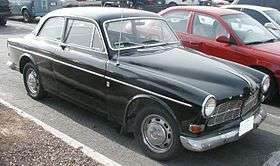
(This list is not necessarily Volvo innovations, but dates when Volvo incorporated the technology into its cars)
- 1944 – safety cage
- 1944 – laminated windscreen
- 1957 – anchor points for two-point safety belts, front
- 1958 – anchor points for two-point safety belts, rear
- 1959 – three-point safety belt, standard in front seats
- 1964 – rearward-facing child safety seat, first prototype tested
- 1966 – crumple zones front and rear
- 1966 – safety door-locks
- 1969 – inertia-reel safety belts
- 1971 – reminder safety belt
- 1972 – three-point safety belt, outer rear seats
- 1972 – rearward-facing child safety seat
- 1974 – multistage impact absorbing steering column
- 1974 – bulb integrity sensor
- 1975 – braking system with stepped bore master cylinder
- 1978 – child safety booster cushion
- 1982 – "anti-submarining" protection
- 1986 – three-point safety belt in centre rear seat (740/760)
- 1990 – integrated child safety cushion in centre rear seat (940/960)
- 1991 – Side Impact Protection System (850 and 940/960)
- 1991 – automatic height adjusting safety belt
- 1992 – reinforced rear seats, estate models
- 1995 – front side airbags (seat-mounted) for torso (850), integrated child safety cushion, outer rear seats
- 1997 – Roll Over Protection System (C70)
- 1998 – Whiplash Protection System (S80)
- 1998 – roof-mounted inflatable curtain side airbags (S80)
- 2001 – SCC : Volvo Safety Concept Car
- 2002 – Roll Stability Control (XC90)
- 2003 – Volvo Intelligent Vehicle Architecture, new front structure (S40, V50)
- 2003 – rear seat belt reminders (S40, V50)
- 2003 – Intelligent Driver Information System, a system that selectively blocks information to the driver in complex traffic situations and lets the information through once the situation has calmed down (S40, V50)
- 2003 – Volvo's Traffic Accident Research Team, inaugurated in Bangkok
- 2004 – Blind Spot Information System, informs the driver of vehicles in the blind spots, using a yellow LED in the A-pillars (S40, V50)
- 2005 – door-mounted inflatable curtain airbags (C70)
- 2006 – Personal Car Communicator (S80)
- 2006 – Collision Warning Brake Support, a system that warns the driver and gives brake support when a collision with another vehicle in front of the car is imminent (S80)
- 2006 – Electrical Parking Brake (S80)
- 2007 – Driver Alert Control, a driver drowsiness detection system that alerts the driver when the system detects that they are becoming tired (S80, V70, XC70)
- 2007 – Lane Departure Warning, a system that warns the driver for unintended lane departures (S80, V70, XC70)
- 2007 – Collision Warning with Auto Brake, a system that automatically brakes the car when a collision with another vehicle in front of the car is imminent (S80, V70, XC70)
- 2007 – Distance Alert, a system that helps the driver keeping a safe distance to the vehicle ahead, by continuously measuring the distance and lighting up the vehicle's head up display if the time gap becomes shorter than what the driver has specified (S80, V70, XC70)
- 2007 – Alcoguard, a hand-held device that the driver blows into before they can start the car, mainly aimed for the company-car sector, taxi operators, state authorities and municipalities (S80, V70, XC70)
- 2008 – City Safety, a system that automatically brakes the car at speeds below 30 km/h (19 mph) if an obstruction is detected in front of the car (new XC60)
- 2010 – Pedestrian Detection with Auto Brake, a system that warns the driver and automatically brakes the car when a collision with a pedestrian in front of the car is imminent (S60)
- 2012 – pedestrian airbag, covering the A-pillars and the lower part of the windscreen in case of collision with a pedestrian (Volvo V40)
- 2012 – knee airbag, for the driver (V40)
- 2012 – Upgraded City Safety, now working up to 50 km/h (31 mph) (S80, V70, XC70, XC60, S60, V60, new V40)
- 2012 – Lane Keeping Aid, a system that steers the car back into the lane again if it is about to unintentionally drift out of the lane (V40)
- 2012 – Road Sign Information, a system that reads road signs and displays them in the information display, thereby helping the driver to remember speed limits, no-overtaking stretches, low-speed areas, etc. (S80, V70, XC70, XC60, S60, V60, V40)
- 2012 – Enhanced Blind Spot Information System, now able to detect approaching vehicles up to 70 meters behind the car (V40)
- 2012 – Cross Traffic Alert, alerting the driver of crossing traffic approaching from the sides (up to 30 meters away) when reversing out of a parking space (V40)
- 2013 – Cyclist Detection with Auto Brake, a system that warns the driver and automatically brakes the car when a collision with a cyclist travelling in the same direction as the car in front of the car is imminent (S80, V70, XC70, XC60, XC90, S60, V60, V40)
Car models
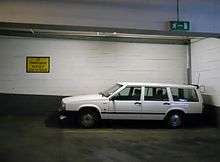
_01.jpg)
Early years
- Volvo ÖV 4, a.k.a. Jakob
- Volvo PV650 Series
- Volvo TR670 Series
- Volvo PV 36 Carioca
- Volvo PV51
- Volvo PV800 Series (civilian (PV801, PV802, PV810, PV821, PV822 and PV831) and military (TP21/P2104, P2104))
- Volvo PV 60
- Volvo PV444/544
- Volvo Duett (Volvo PV445, P210)
- Volvo P1900
- Volvo Amazon/Volvo 122
- Volvo P1800
- Volvo 66
- Volvo C202
- Volvo C3-series (C303, C304 and C306)
Tri-digit nomenclature
Starting with the 140 series in 1966, Volvo used a tri-digit system for their cars. The first number was the series, the second number the number of cylinders and the third number the number of doors; so a 164 was a 1-series with a six-cylinder engine and four doors. However, there were exceptions to this rule – the 780 for example, came with turbocharged I4 and naturally aspirated V6 petrol engines and I6 diesel engines, but never an eight-cylinder, as the "eight" would suggest. Similarly, the 760 often was equipped with a turbocharged I4 engine, and the Volvo 360 only had four cylinders. Some 240GLT had a V6 engine. The company dropped the meaning of the final digit for later cars like the 740, but the digit continued to identify cars underhood on the identification plate.
- Volvo 140 (Volvo 142, Volvo 144, Volvo 145)
- Volvo 164
- Volvo 240 (Volvo 242, 244, 245)
- Volvo 260 (Volvo 262C, 264, 265)
- Volvo 340 (Volvo 343, 345)
- Volvo 360
- Volvo 440/460
- Volvo 480
- Volvo 740
- Volvo 760
- Volvo 780
- Volvo 850
- Volvo 940
- Volvo 960
Post tri-digit models
- Released in 1995[68]
- Released in 1996[69][70]
- Volvo S70 replaced the 850 saloon
- Volvo V70 replaced the 850 estate
- Volvo S90 replaced the 960 saloon
- Volvo V90 replaced the 960 estate
- Released in 1997[70]
- Released in 1998[70]
- Volvo C70 convertible
- Volvo S80 replaced the Volvo S90
- Released in 2000[69]
- Volvo S60 replaced the Volvo S70
- Volvo V70 II
- Volvo V70 XC II
- Released in 2002[69]
- Released in 2004
- Volvo S40 II replaced the Volvo S40
- Volvo V50 replaced the Volvo V40
- Released in 2006
- Released in 2007
- Released in 2008
- Released in 2010
- Released in 2012
- Volvo V40 II replaced both the Volvo S40 II and Volvo V50
- Released in 2014
- Volvo XC90 II replaced the Volvo XC90
- Released in 2016
- Volvo S90 II replaced the S80 II
Current models
Today, the company uses a system of letters denoting body style followed by the series number. "S" stands for "sedan", "C" stands for "coupé" or "convertible" (including three-door hatchback AKA "shooting brake") and "V" stands for "versatile" (station wagon). "XC" stands for "cross country" originally added to a more rugged V70 model as the V70XC and indicates all wheel drive paired with a raised suspension to give it an SUV look. Volvo would later change the name to the "XC70" in keeping with its car naming consistent with the XC90. So a V50 is an estate ("V") that is smaller than the V70.
Originally, Volvo was planning a different naming scheme. S and C were to be the same, but "F", standing for "flexibility", was to be used on station wagons. When Volvo introduced the first generation S40 and V40 in 1995, they were announced as the S4 and F4. However, Audi complained that it had inherent rights to the S4 name, since it names its sporty vehicles "S", and the yet to be introduced sport version of the Audi A4 would have the S4 name. Volvo agreed to add a second digit, so the vehicles became the S40 and F40. However, that led to a complaint from Ferrari, who used the Ferrari F40 name on their legendary sports car. This led to Volvo switching the "F" to "V", for versatile.
- Small cars (Ford Global C platform)
- Volvo V40 2012–present (M/Y 2013–)
- Large cars (Volvo P2 platform)
- Volvo XC90 Classic 2014–present (M/Y 2014–)
- Large cars (Volvo P3 platform)
- Volvo S60 2010–present (M/Y 2011–)
- Volvo V60 2010–present (M/Y 2011–)
- Volvo V60 Cross Country 2014–present (M/Y 2015–)
- Volvo S60 Cross Country 2014–present (M/Y 2015–)
- Volvo S80 2006–2016 (M/Y 2007–2016)
- Volvo V70 2007–2016 (M/Y 2008–2016)
- Volvo XC60 2008–present (M/Y 2009–)
- Volvo XC70 2007–2016 (M/Y 2008–2016)
- Large cars (Scalable Product Architecture) (SPA)
- Volvo XC90 2014–present (M/Y 2015–)
- Volvo S90 2016–present (M/Y 2017–)
- Volvo V90 2016–present (M/Y 2017–)
- Volvo V90 Cross Country 2016–present (M/Y 2017–)
|
Release of the next generation by model and year expected/released under Geely ownership
- XC40 (2018)[71]
- V40 (2019)[72]
- S40 (2019)[73]
- S60 (2018)[74]
- S90 (2018)[75]
- V60 (2018)[76]
- V90 (2016)[77]
- XC90 (2014)[78]
Concept cars
- Volvo Venus Bilo (1933)
- Volvo Philip (1952)
- Volvo Margarete Rose (1953)
- Volvo Elisabeth I (1953)
- Volvo VESC (1972)
- Volvo 1800 ESC (1972)
- Volvo EC (1977)
- Volvo City Taxi (1977)
- Volvo Tundra (1979)
- Volvo VCC – Volvo Concept Car (1980)
- Volvo LCP2000 (1983)
- Volvo ECC – Environment Concept Car (1992)
- Volvo ACC – Adventure Concept Car (1997)
- Volvo SCC – Safety Concept Car (2001)
- Volvo PCC – Performance Concept Car (2001)
- Volvo PCC2 (2002)
- Volvo ACC2 (2002)
- Volvo VCC – Versatility Concept Car (2003)
- Volvo YCC – Your Concept Car (2004)
- Volvo T6 (2005)
- Volvo 3CC (2005)
- Volvo C30 Design Concept (2006)
- Volvo XC60 Concept (2006)
- Volvo ReCharge Concept (2007)
- Volvo S60 Concept (2008)
- C30 DRIVe Electric (2010)
- Volvo Universe Concept (2011)
- Volvo Concept You (2011)
- Volvo Concept Coupe (2013)
- Volvo Concept Estate (2014)
- Volvo Concept XC Coupe (2014)
Alternative propulsion

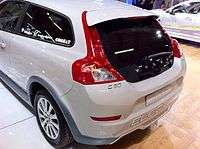
Flexible-fuel vehicles
In 2005, Volvo introduced to the Sweden market the company's first E85 flexifuel models. Volvo introduced its S40 and V50 with flexible-fuel engines, joined in late 2006 by the then new C30. All Volvo models were initially restricted to the Sweden market, until 2007, when these three models were launched in eight new European markets.[79] In 2008, Volvo launched the V70 with a 2.5-litre turbocharged flexifuel engine.[80]
Plug-in hybrids
The Volvo ReCharge is a plug-in hybrid concept car with an all-electric range (AER) of 60 miles (97 km). It was officially unveiled at the 2007 Frankfurt Auto Show.[81]
On 1 June 2009, Volvo announced the launching of series production diesel-electric plug-in hybrids by 2012.[82][83][84] The company plans to sell a series hybrid with the goal of achieving emissions of less than 50 grams of CO2 per kilometer.[83][84] As part of a joint venture with Vattenfall, a Swedish energy company, Volvo converted two Volvo V70 to plug-in hybrid demonstrators that have been in field testing in Göteborg, Sweden since December 2009.[85] Vattenfall offered customers participating in this trial the supply of renewable electricity generated from wind power or hydropower.[86] Among other challenges, this test has allowed to experience the all-electric range at low temperatures, which has been a disadvantage of plug-in vehicles.[84][85][86]
Electric car
The Volvo C30 DRIVe Electric concept car was exhibited at the 2010 Paris Motor Show and Volvo announced that field testing will begin in 2011, in the US, Europe, and China.[87] The C30 DRIVe electric car has a lithium-ion battery, a top speed of 130 km/h (81 mph), and an all-electric range of up to 150 kilometres (93 mi). Field testing began in 2010 with 10 units in Göteborg, Sweden.[88]
Gas-turbine Hybrid
The Volvo ECC (Environmental Concept Car) was exhibited at the 1992 Paris Motor Show. The vehicles range on batteries alone was 90 miles (140 km), and when combined with a full tank of fuel for the turbine, about 415 miles (668 km).
Drive-E engines
Starting in the 2015 model year (Volvo S60, V60, and XC60), Volvo introduced a line of forced-induction four-cylinder engines, dubbed "Drive-E",[89] to increase the efficiency of their models without sacrificing performance. These engines also debuted throughout the lineup that year, and also appeared in the second-generation Volvo XC90. Hybridized versions of these engines would, in theory, have enough power to match eight-cylinder engines.
Production locations around the world
- Gothenburg, Sweden (Volvo Cars Headquarters, R&D and Safety Center)
- Hällered, Sweden Volvo Test Track
Assembly plants
- Torslanda, Sweden (Volvo Cars Torslanda – Torslandaverken) 1964–present
- Ghent, Belgium (Volvo Cars Ghent) 1965–present
- Chongqing, China (Chang’an-Volvo) 2009–present
- Chengdu, China (Zhejiang Geely-Volvo) 2013–present
- Daqing, China (Zhejiang Geely-Volvo) 2014–present
- Kuala Lumpur, Malaysia (Swedish Motor Assemblies) 1967–present For left hand drive
Future assembly plants
- Charleston, South Carolina, United States (Volvo Cars) Estimated Completion: 2018
Component plants
- Skövde, Sweden (engines)
- Floby, Sweden (engine components, brake discs)[90]
- Zhangjiakou, Hebei, China (engines)
- Olofström, Sweden (body components)
Former Component plants
Bridgend South Wales D2 1.6 diesel engine used in the V40 and Crosscountry (Ford Motor company) until 2015
Engine types
Volvo uses in-line, or straight engines in their production vehicles. Volvo is also known for the application of the in-line 5-cylinder engine to its vehicle line up since its introduction in 1993 in the Volvo 850.
- Side valve six – fitted into the PV651/2, TR671/4, PV653/4, TR676/9, PV658/9, PV36, PV51/2, PV53/6, PV801/2, PV821/2, PV831/2 and PV60 from 1929 to 1958
- B4B and B14A – fitted into the Volvo PV and Volvo Duett from 1947 to 1956
- B16 (A and B) – fitted into the PV, Duett and Volvo Amazon from 1957 to 1960
- B18 and B20 – 1.8 L/2.0 L OHV 8v fitted into all Volvo models from 1961 to 1974 except 164 (and 1975 US spec 240 models).
- B19, B21, and B23 – fitted from 1975
- B200 and B230 – 2.0 L and 2.3 L, respectively, SOHC 8v fitted to 240, 360, 700, 940 series cars from 1985
- B204 and B234 – 2.0 L and 2.3 L DOHC 16 valve engines
- B27/B28 and B280 – 2.7 and 2.8 L SOHC 12v developed together with Renault and Peugeot
- B30 – fitted to all 164 models
Transmissions
Volvo automatic transmissions in the past were made by the ZF Friedrichshafen company, but now the transmissions are co-developed with Aisin of Japan. Geartronic is Volvo Cars' name for its manumatic transmission.
Automatic transmissions
- Borg-Warner 35 transmission
- Borg-Warner 55 transmission
- Volvo AW70 series transmissions
- Volvo AW70 transmission
- Volvo AW71 transmission
- Volvo AW72 transmission
- AW50-42 (4-speed automatic, FWD/AWD)
- AW55-50/51 (5-speed automatic, FWD/AWD)
- GM4T65EV/GT (4-speed GM automatic, FWD/AWD)
- AWTF-80 SC (6-speed automatic, FWD/AWD)
- ZF 4HP22 transmission
Manual transmissions
- Volvo M30 transmission
- Volvo M40 transmission
- Volvo M400 & M410 transmission
- Volvo M41 transmission
- Volvo M45 transmission
- Volvo M46 transmission
- Volvo M47 transmission
- Volvo M50 transmission
- Volvo M51 transmission
- Volvo M56 transmission
- Volvo M58 transmission
- Volvo M59 transmission
- Volvo M65 transmission
- Volvo M66 transmission
- Volvo M90 transmission
- IB5
- MTX-75
- MMT6
- MPS6 (6-speed dual clutch Powershift, FWD)
Motorsport
In 1959, Volvo had set up its own motorsport department. This led to Volvo enjoying worldwide success in the motorsport arena throughout the early 1960s. In 1961, Gran Premio de Argentina Gunnar Andersson was appointed Volvo's competition department manager, signing a number of drivers, including Carl-Magnus Skogh, Tom Trana and Ewy Rosqvist, though he himself still continued to compete in rallies. In 1964, Volvo made heavy investments in the Safari Rally, entering four Volvo PV544s in the 1964 competition. A PV544 driven by Joginder and Jaswant Singh won the Safari Rally in 1965.[91]
Volvo entered the European Touring Car Championship with the Volvo 240 Turbo in the 1980s. In the 1984 European Touring Car Championship, the Swedish team Sportpromotion won the EG Trophy at Zolder circuit, followed by placing second in the Mugello. In 1985, Volvo signed Swiss engine guru Reudi Eggenberger to run its works team through Eggenberger Motorsport. Team drivers Gianfranco Brancatelli and Thomas Lindström led the 240T to victory in the 1985 ETCC.
Also in 1985, New Zealander Mark Petch had purchased a 240T from the Magnum team in Sweden (and claimed to run the only privateer Volvo 240T outside of Europe), and drivers Robbie Francevic and Michel Delcourt had also won the Wellington 500 street race in New Zealand in January. Francevic went on to finish 5th in the 1985 Australian Touring Car Championship, taking wins at Symmons Plains and Oran Park. The factory-supported Petch team also participated in the 1985 Bathurst 1000. Thomas Lindström later joined Francevic to win the 1986 Wellington 500. The Petch team become the Volvo Dealer Team in 1986, and expanded to two cars, with the other being for John Bowe, who had driven the Volvo with Francevic at the 1985 Bathurst 1000.
Volvo contracted Belgian based team RAS Sport to be its works team in the ETCC in 1986, following Eggengerger moving to race Ford Sierra's. This team included defending champion Lindström, joined by ex-Formula One and Grand Prix motorcycle racer Johnny Cecotto, as well as Ulf Granberg and Anders Olofsson. The team took wins at wins at Hockenheim, Anderstorp, Brno, Österreichring and Zolder, though the wins at Anderstorp and the Österreichring were disqualified due to the use of illegal fuel.
The 240T also entered the Guia Race, part of the Macau Grand Prix in 1985, 1986 and 1987, winning in both 1985 and 1986.
Volvo also saw success in the Deutsche Tourenwagen Meisterschaft (German Touring Car Championship), with a 240 Turbo driven by Per Stureson winning the 1985 DTM.
Volvo also entered the British Touring Car Championship in the 1990s with Tom Walkinshaw Racing. This partnership was responsible for the controversial 850 Estate racing cars, driven by Rickard Rydell and Jan Lammers and with a best qualifying placing of third and a best race finish of fifth, which was only rendered uncompetitive when the FIA allowed the use of aerodynamic aids in 1995. TWR then built and ran the works 850 Saloon, with six wins in 1995, and five wins in 1996, and a S40, with one win in 1997 in the BTCC, as well as Volvo placing third in the Manufacturers Championship, both in 1995 and 1996. In 1998, TWR Volvo won the British Touring Car Championship with Rickard Rydell driving the S40R.
Volvo also competed in the Super Touring category with the 850 across Europe and in Australia. Australian race car driver Peter Brock drove an 850 T5 with Tony Scott in the 1994 James Hardie 12 Hour production car race at Bathurst, finishing 25th. He also drove an 850 saloon in the 1996 Australian Super Touring Championship, placing sixth in the Drivers’ Championship.
Volvo regularly entered the S60 in the Swedish Touring Car Championship, where it finished 2nd in the drivers' championship twice and won the manufacturers' title once. The S60 continued to be raced after the formation of the Scandinavian Touring Car Championship, a merger of the Swedish and Danish touring car championships. Thed Björk won three consecutive titles from 2013 to 2015, driving an S60 prepared by Polestar Racing.
From 2002 to 2007, there was an S60 one-make racing series as a support series to the Swedish Touring Car Championship known as the S60 Challenge Cup, using 26 factory-modified S60s.
An S60 was driven by Robert Dahlgren in the Swedish round of the 2007 World Touring Car Championship.
The first generation S60 made its competitive debut in 2006, racing in the Speed World Challenge GT class. The second-generation model was introduced for the 2009 season. In 2010, its programme was expanded to include the SCAA Pro Racing World Challenge, where it won both the drivers' and manufacturers' championships in the GT class. The programme was expanded again in 2011, to include the Pirelli World Challenge.[92]
In 2008, Volvo entered the Swedish Touring Car Championship with a C30 powered by bioethanol E85 fuel. Robert Dahlgreen and Tommy Rustad were the drivers, finishing 5th and 10th respectively in the championship. Volvo had also signalled their intentions to enter the 2009 British Touring Car Championship with the same car.[93]
Volvo entered the V8 Supercars Championship with two S60s in 2014 with Garry Rogers Motorsport, and were immediately competitive.[94] Following ten pole positions and four race wins, Scott McLaughlin finished fifth in the championship and was awarded the Barry Sheene Medal.[95]
Marketing

The name Volvo is Latin for "I roll".
Logo
The Volvo symbol is an ancient chemistry sign for iron. The iron sign is used to symbolize the strength of iron used in the car as Sweden is known for its quality iron. The diagonal line (a strip of metal) across the grille came about to hold the actual symbol, a circle with an arrow, in front of the radiator.
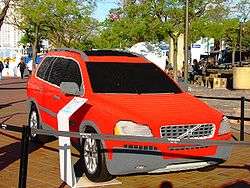
Sponsorship
Volvo has since the 1950s, had special international sales programs for customers assigned abroad, for example Diplomat Sales, Military Sales and Expat Sales.
The Volvo trademark is now jointly owned (50/50) by Volvo Group and Volvo Car Corporation.[96] One of the main promotional activities for the brand is the sailing Race Volvo Ocean Race, formerly known as the Whitbread Around the World Race. There is also a Volvo Baltic Race and Volvo Pacific Race, and Volvo likes to encourage its affluent image by sponsoring golf tournaments all over the world including major championship events called the Volvo Masters and Volvo China Open.
Volvo sponsored the Volvo Ocean Race, the world's leading round-the-world yacht race for the first time in 2001–02. The next edition was to take place between 2011 and 2012. Volvo has also had a long-standing commitment to the International Sailing Federation (ISAF) and is involved in the Volvo/ISAF World Youth Sailing Championships since 1997.
In 2011, Volvo Cars is the main sponsor of the winter sports and music festival Snowbombing in Austria.
In 2012, Volvo signed NBA star Jeremy Lin to an endorsement agreement for two years to participate in Volvo's corporate and marketing activities as a "brand ambassador" for Volvo Car Corp.[97]
In 2015, Volvo signed a deal with Chennaiyin FC, a football franchise team of the Indian Super League as a side shirt sponsor.
Volvo trademark lawsuit
In 1990, Volvo Cars filed a lawsuit against Hong Kong-based Club Volvo night club for infringement in Hong Kong High Court. The lawsuit ended with settlement where the night club paid 1 dollar to Volvo Cars. Since then, Club Volvo had been renamed to Club Borubo (which pronounced like Volvo in Japanese), and then Club Bboss (reference to Big Boss).[98][99][100]
See also
- Jan Wilsgaard
- Tom Trana
- The Saint (TV series)
- British Touring Car Championship (BTCC)
- Tom Walkinshaw Racing (TWR)
- Polestar Racing (STCC)
- Garry Rogers Motorsport (V8 Supercars)
- Volvo – The Game
- Volvo Penta
- Polestar (in-house performance division)
References
- ↑ "Contat Volvo." Volvo Cars. Retrieved on 5 August 2014. "Visiting address, Headquarters: VAK building, Assar Gabrielssons väg Göteborg"
- ↑ "China's Geely completes acquisition of Volvo". Associated Press. 2 August 2010. Retrieved 2 August 2010.
- ↑ "Ford closes deal with China's Geely to sell Volvo". MarketWatch. 28 March 2010. Retrieved 28 March 2010.
- ↑ Financial statement 2013 (FY 2012)
- ↑ "Volvo PV gör miljardvinst - Ekonomi - www.gp.se". Göteborgs-Posten (in Swedish). TT. 2 May 2012. Retrieved 2 May 2012.
- ↑ "Volvo Goes to China: Will Its Tradition of Safety Go With It?". CBS News. 29 March 2010. Retrieved 14 July 2015.
- ↑ "Anmelden - Volvo Car Germany Pressezentrum". Media.volvocars.com. Retrieved 2016-06-16.
- 1 2 "Volvo Urged, 'Drive It Like You Hate It'; Scoffers Did and They Liked It". Automotive News; 100 Year Almanac. Crain Communications: 80. 1996-04-24.
- 1 2 Lindh, Björn-Eric (1986). Volvo: The Cars - From the 20s to the 80s (2nd English ed.). Malmö, Sweden: Förlagshuset Norden. p. 138. ISBN 91-86442-14-7.
- ↑ "Volvo Car Torslanda celebrates 50 years of success". Volvo Media Relations. Retrieved 2015-02-25.
- ↑ "Volvo Adventures, Volvo assembly plants". Retrieved 14 July 2015.
- ↑ Zach Bowman. "Volvo to end C70 production in Uddevalla, will it surface elsewhere?". Autoblog. Retrieved 14 July 2015.
- ↑ "Andra chansen till norsk olja" [Second chance at Norwegian oil]. Affärsvärlden (in Swedish). Stockholm, Sweden: Talentum Media AB. 2012-02-07.
- ↑ Dwyer, Paula (1993-12-20). "Why Volvo Kissed Renault Goodbye". Bloomberg.
- 1 2 "Volvo brand celebrates its 90th anniversary". DesignTAXI.com, 29 May 2005.
- ↑ "AB Volvo - press release". Cision Wire.
- ↑ Harley, Michael (2008-12-04). "Ford wants US$6 billion for Volvo". Autoblog.com. Retrieved 2010-11-23.
- ↑ Korzeniewski, Jeremy (2009-02-05). "REPORT: Geely denies plans to buy Volvo". Autoblog.com. Retrieved 2010-11-23.
- ↑ Geely Confirms Interest In Volvo Archived September 1, 2009, at the Wayback Machine.
- ↑ "Geely Jumps to Nine-Year High After Goldman Bond Sale (Update2)". bloomberg.com. Retrieved 2010-11-23.
- ↑ "Goldman investment boosts China Geely's global hopes". London: Guardian. 2008-05-07. Retrieved 2010-11-23.
- ↑ "Re-Evaluate Strategic Options for Volvo Car Corporation". Ford.com. Retrieved 2010-11-23.
- ↑ Clark, Andrew (2009-10-28). "Ford set to offload Volvo to Chinese carmaker Zhejiang Geely | Business | guardian.co.uk". London: Guardian. Retrieved 2009-12-04.
- ↑ "Geely/Volvo deal 'done by Feb'". Autocar.co.uk. 17 December 2009. Retrieved 2009-12-22.
- ↑ Dolan, Matthew (2010-07-16). "Volvo Deal Sparks Leadership Shake-Up - WSJ.com". Online.wsj.com. Retrieved 2010-08-07.
- ↑ "FORD REACHES AGREEMENT TO SELL VOLVO CARS AND RELATED ASSETS TO GEELY". www.ford.com/about-ford/news-announcements. Archived from the original on 31 March 2010. Retrieved 2010-03-30.
- ↑ Ola Kinnander and Keith Naughton (2010-08-02). "Geely Seals Takeover of Volvo From Ford; Jacoby Named CEO". Bloomberg. Retrieved 2010-08-21.
- ↑ "Zhejiang Geely Completes Acquisition of Volvo Car Corporation. Stefan Jacoby Named President and CEO of Volvo Cars". Volvocars.com. 2010-08-02. Retrieved 2010-08-07.
- 1 2 "Volvo in 'killer brakes' inquiry". London: The Independent. Retrieved 2010-11-23.
- 1 2 3 4 5 Volvo Safety Firsts Archived February 26, 2008, at the Wayback Machine.
- ↑ Andréasson, Rune; Claes-Göran Bäckström (2000). The Seat Belt : Swedish Research and Development for Global Automotive Safety. Stockholm: Kulturvårdskommittén Vattenfall AB. pp. 9, 15–16. ISBN 91-630-9389-8.
- ↑ "The 50-year-old Innovation". Edmunds.com. Retrieved 2010-11-23.
- ↑ Three-point seatbelt inventor Nils Bohlin born, History Channel
- ↑ Volvo's Three-Point Safety Belt Celebrates 50 Years of Saving Lives, The Auto Channel
- ↑ "Volvo Cars Safety". Volvocars.com. 2009-09-08. Retrieved 2010-11-23.
- 1 2 3 "Second-Generation Sips-Bag protects both chest and head - 1998 : Volvo Group Global". Retrieved 14 July 2015.
- ↑ CarAccidentAttorneyHawaii.com. "Safety Recalls". Safety Recalls. Retrieved 2011-03-16.
- ↑ CarAccidentAttorneyHawaii.com. "Safety Recalls". Safety Recalls. Retrieved 2011-03-16.
- ↑ "1998". Retrieved 14 July 2015.
- ↑ Hyundai Motor America – abouthyundai, news, 2005 10 18 Archived December 28, 2008, at the Wayback Machine.
- ↑ "Haldex Traction Systems – About Us". Haldex-traction.com. Retrieved 2010-11-23.
- ↑ "2006 Volvo C70". Retrieved 14 July 2015.
- ↑ "Volvo Develops Inflatable Curtain (IC) for Cabriolets". Retrieved 14 July 2015.
- ↑ "Patent US7690682 - Folding method for door mounted inflatable curtain". Retrieved 14 July 2015.
- ↑ "English (Reports) – Folksam" (in Swedish). Folksam.se. Retrieved 2010-11-23.
- ↑ "2006 Safety Picks". SecurityWorld.com. Archived from the original on May 29, 2007. Retrieved 2009-05-28.
- 1 2 "Insurance Institute: Ten safest cars". CNN. 5 December 2005. Retrieved 3 November 2014.
- 1 2 "Volvo Cars' unique Personal Car Communicator (PCC) has won the Innovation award at the 2007 - Volvo Car Group Global Media Newsroom". Media.volvocars.com. Retrieved 2016-06-16.
- ↑ "Personal Car Communicator". Retrieved 14 July 2015.
- ↑ "High-tech for Volvo S80, V70, XC70". CNET. CBS Interactive. Retrieved 14 July 2015.
- ↑ Ossi Carp och TT (2008-01-31). "DN: Volvo vållade barns död" (in Swedish). Dn.se. Retrieved 2010-11-23.
- ↑ Yahoo News: Volvo fined 200,000 euros over fatal French car crash Archived February 4, 2008, at the Wayback Machine.
- ↑ "The Local: Volvo fined over children's death". Thelocal.se. 1999-06-17. Retrieved 2010-11-23.
- ↑ "IIHS-HLDI: Volvo S40". Iihs.org. Retrieved 2009-05-28.
- ↑ "IIHS-HLDI: Volvo S60". Iihs.org. Retrieved 2009-05-28.
- ↑ "IIHS-HLDI: Volvo 850/S70". Iihs.org. Retrieved 2010-11-23.
- ↑ "IIHS-HLDI: Volvo XC90". Iihs.org. Retrieved 2010-11-23.
- ↑ "IIHS-HLDI: Volvo S80". Iihs.org. Retrieved 2010-11-23.
- ↑ "IIHS-HLDI: Volvo C70". Iihs.org. Retrieved 2013-04-14.
- ↑ "IIHS-HLDI: Volvo XC60". Iihs.org. Retrieved 2013-04-14.
- ↑ "IIHS-HLDI: Volvo S60". Iihs.org. Retrieved 2013-04-14.
- ↑ "IIHS-HLDI: Volvo C30". Iihs.org. Retrieved 2013-04-14.
- ↑ "volvo-xc90-earns-institutes-top-safety-award". Iihs.org. Retrieved 2014-12-17.
- ↑ "Volvo S80". Iihs.org. Retrieved 2014-12-17.
- ↑ "Volvo - Euro NCAP - For safer cars crash test safety rating". Retrieved 2013-04-14.
- ↑ "Record-breaking safety rating for the all-new Volvo V40 in Euro NCAP test". Retrieved 2013-04-14.
- ↑ Retrospective: Volvo History (Channel 4) Archived October 17, 2007, at the Wayback Machine.
- ↑ "Heritage - VOLVO S40 (1995-2012) - Overview - Volvo Car Group Global Media Newsroom". Media.volvocars.com. Retrieved 2016-06-16.
- 1 2 3 "VOLVO'S ESTATE CARS – a high-capacity trip down memory lane - Volvo Car UK Media Newsroom". Media.volvocars.com. Retrieved 2016-06-16.
- 1 2 3 "1990-1999: A historical review - Volvo Car Group Global Media Newsroom". Media.volvocars.com. Retrieved 2016-06-16.
- ↑ http://jalopnik.com/these-are-the-nine-new-volvo-models-we-get-before-2019-1688184638
- ↑ http://jalopnik.com/these-are-the-nine-new-volvo-models-we-get-before-2019-1688184638
- ↑ http://jalopnik.com/these-are-the-nine-new-volvo-models-we-get-before-2019-1688184638
- ↑ http://jalopnik.com/these-are-the-nine-new-volvo-models-we-get-before-2019-1688184638
- ↑ http://jalopnik.com/these-are-the-nine-new-volvo-models-we-get-before-2019-1688184638
- ↑ http://jalopnik.com/these-are-the-nine-new-volvo-models-we-get-before-2019-1688184638
- ↑ http://jalopnik.com/these-are-the-nine-new-volvo-models-we-get-before-2019-1688184638
- ↑ http://jalopnik.com/these-are-the-nine-new-volvo-models-we-get-before-2019-1688184638
- ↑ Volvo Cars Press Release (2006-11-08). "Volvo Expands Range of FlexiFuel Cars". World Car Fans. Retrieved 2008-08-24.
- ↑ "About Volvo Corporation 2007 and 2008". Volvo Cars. 2008. Archived from the original on 2008-06-29. Retrieved 2008-08-24.
- ↑ "Volvo ReCharge Concept Debuts at Frankfurt Motor Show". media.ford.com. Archived from the original on 2008-03-07. Retrieved 2008-02-13.
- ↑ "Volvo promises diesel-electric plug-in hybrid by 2012". Motor Authority. 2009-06-01. Archived from the original on June 25, 2009. Retrieved 2009-06-04.
- 1 2 Scott Doggett (2009-06-01). "Volvo Unveils Plug-in Diesel-Electric Hybrid Car, Says It Will Be Available in 2012". Edmunds.com. Archived from the original on 2009-06-07. Retrieved 2009-06-04.
- 1 2 3 John Voelcker (2009-06-02). "Volvo to Introduce Plug-In Diesel by 2012". Fox News. Retrieved 2009-06-04.
- 1 2 Vattenfall (September 2010). "Business Intelligence for E-Mobility" (PDF). PluginCars.com. Retrieved 2010-09-05.
- 1 2 "Volvo Cars and Vattenfall to Develop New Plug-in Diesel-Electric Hybrids; Three V70 PHEV Demonstrators on the Road This Summer". Green Car Congress. 2009-06-01. Retrieved 2009-06-04.
- ↑ "Volvo Car Corporation Confirms Introduction of PHEV Diesel in 2012; C30 BEV Production in 2011". Green Car Congress. 2010-09-30. Retrieved 2010-10-04.
- ↑ "Volvo's electrification chief talks C30 electric leases, industry's new battery suppliers". Autoblog Green. 2010-10-04. Retrieved 2010-10-05.
- ↑ "2015 Volvo S60 / V60 / XC60 With New Drive-E Four-Cylinder Engine Volvo bets big on reinventing the Swedish meatball". Car and Driver. 2013-10-01. Retrieved 2015-12-29.
- ↑ "Volvo Car USA Newsroom". Media.volvocars.com. Retrieved 2016-06-16.
- ↑ "50 years since the Singh brothers' fantastic Volvo victory in the Safari Rally". Volvo Cars. Retrieved December 2, 2015.
- ↑ "SCCA Pro Racing World Challenge". World-challenge.com. 2011-02-14. Retrieved 2011-04-02.
- ↑ "Volvo to Expand Green Racer". PopSci.com.au. 2009-01-30. Retrieved 2009-01-30.
- ↑ "McLaughlin wins Barry Sheene medal at V8 Gala". Speedcafe. 2014-12-08. Retrieved 2015-10-30.
- ↑ "Shared ownership of the Volvo brand name". .volvo.com. Retrieved 2012-03-17.
- ↑ Shirouzu, Norihiko (2012-03-20). "Jeremy Lin Hired to Endorse Volvo". The Wall Street Journal.
- ↑ "富豪汽車告大富豪" (PDF). Retrieved 2012-07-01.
- ↑ ccue.com (2012-06-21). "見證香江舞國風雲 大富豪結業 傳奇落幕". Dushi.ca. Retrieved 2012-07-01.
- ↑ "Just a song before I go". Thestandard.com.hk. Retrieved 2012-07-01.
External links
| Wikimedia Commons has media related to Volvo Car Corporation. |
- Wikibooks:Vehicle Identification Numbers (VIN codes)/Volvo/VIN codes
- Volvo Cars International
- Volvo Cars Philippines (Scandinavian Motors Corporation)
- Volvo Cars of North America
- Official Volvo Cars UK web site
- Volvo Business Fleet
- Volvo Business News
- Volvo Environmental Cars
- Volvo Business Value
| « previous — Volvo Cars road car timeline, 1960s–present | |||||||||||||||||||||||||||||||||||||||||||||||||||||||||
|---|---|---|---|---|---|---|---|---|---|---|---|---|---|---|---|---|---|---|---|---|---|---|---|---|---|---|---|---|---|---|---|---|---|---|---|---|---|---|---|---|---|---|---|---|---|---|---|---|---|---|---|---|---|---|---|---|---|
| Type | 1960s | 1970s | 1980s | 1990s | 2000s | 2010s | |||||||||||||||||||||||||||||||||||||||||||||||||||
| 0 | 1 | 2 | 3 | 4 | 5 | 6 | 7 | 8 | 9 | 0 | 1 | 2 | 3 | 4 | 5 | 6 | 7 | 8 | 9 | 0 | 1 | 2 | 3 | 4 | 5 | 6 | 7 | 8 | 9 | 0 | 1 | 2 | 3 | 4 | 5 | 6 | 7 | 8 | 9 | 0 | 1 | 2 | 3 | 4 | 5 | 6 | 7 | 8 | 9 | 0 | 1 | 2 | 3 | 4 | 5 | 6 | |
| Small family car | 66 | 440/460 | |||||||||||||||||||||||||||||||||||||||||||||||||||||||
| 480 | C30 | ||||||||||||||||||||||||||||||||||||||||||||||||||||||||
| 544 | 340/360 | S40/V40 | S40/V50 | V40 | |||||||||||||||||||||||||||||||||||||||||||||||||||||
| Compact executive car | Amazon/120/130 | S60/V70 | S60/V60 | ||||||||||||||||||||||||||||||||||||||||||||||||||||||
| Duett | 140/145 | 240 | 850 | S70/V70 | |||||||||||||||||||||||||||||||||||||||||||||||||||||
| Executive car | 260 | 740 | 940 | S80 | S80/V70 | ||||||||||||||||||||||||||||||||||||||||||||||||||||
| 164 | 760 | 960 | S90/V90 | S90/V90 | |||||||||||||||||||||||||||||||||||||||||||||||||||||
| Sports saloon | 242 GT | 240 Turbo | 850 T-5R/R | S70 R/V70 R | S60 T5/V70 T5 | S60 R/V70 R | |||||||||||||||||||||||||||||||||||||||||||||||||||
| 2-door saloon/Shooting-brake | P1800 | 1800S | 1800E | 1800ES | |||||||||||||||||||||||||||||||||||||||||||||||||||||
| Coupé | 262C | 780 | C70 | C70 | |||||||||||||||||||||||||||||||||||||||||||||||||||||
| Crossover utility vehicle | XC60 | ||||||||||||||||||||||||||||||||||||||||||||||||||||||||
| V70XC | XC70 | XC70 | |||||||||||||||||||||||||||||||||||||||||||||||||||||||
| XC90 | XC90 | ||||||||||||||||||||||||||||||||||||||||||||||||||||||||
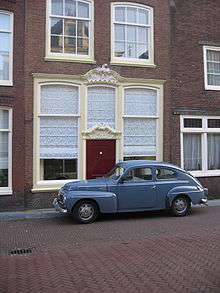
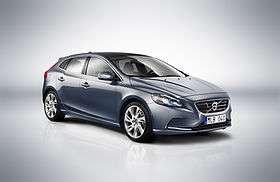
_%E2%80%93_Frontansicht%2C_12._August_2013%2C_D%C3%BCsseldorf.jpg)
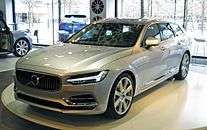


_D4_Kinetic_wagon_(2015-07-09)_01.jpg)
